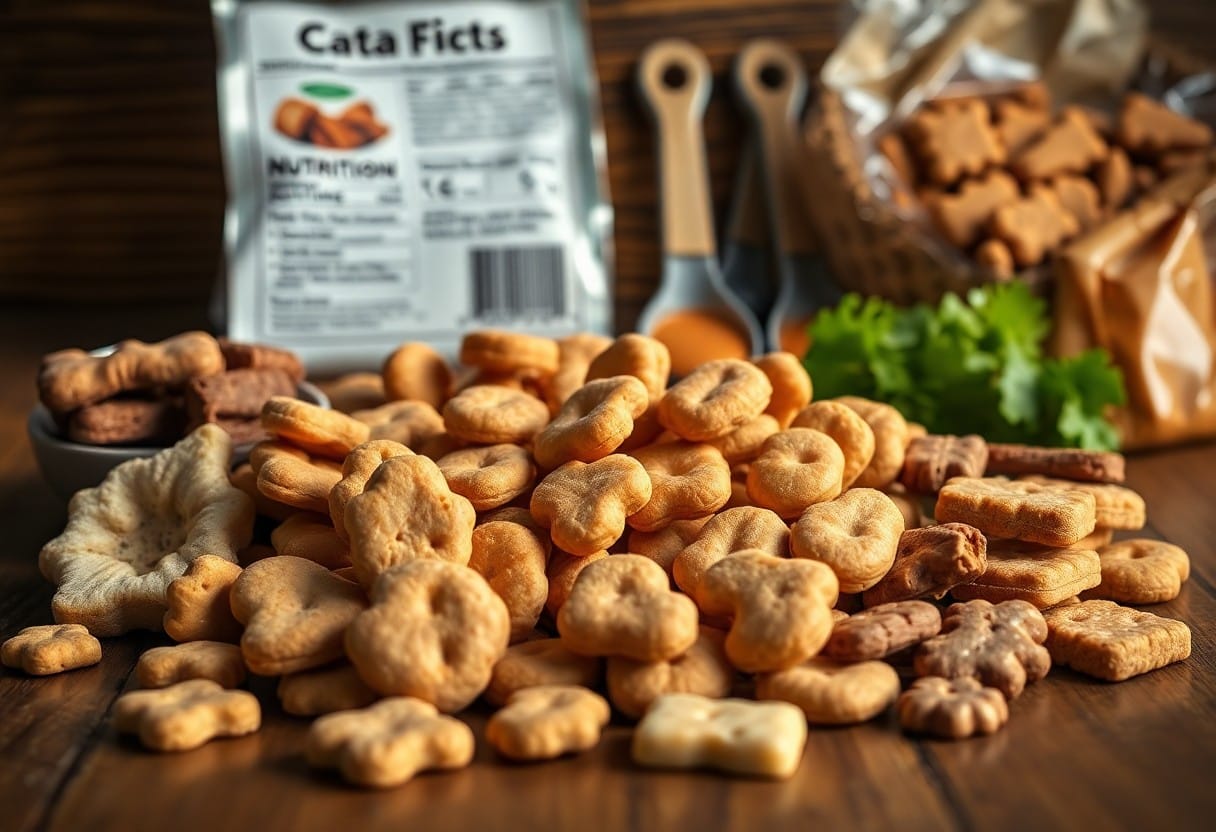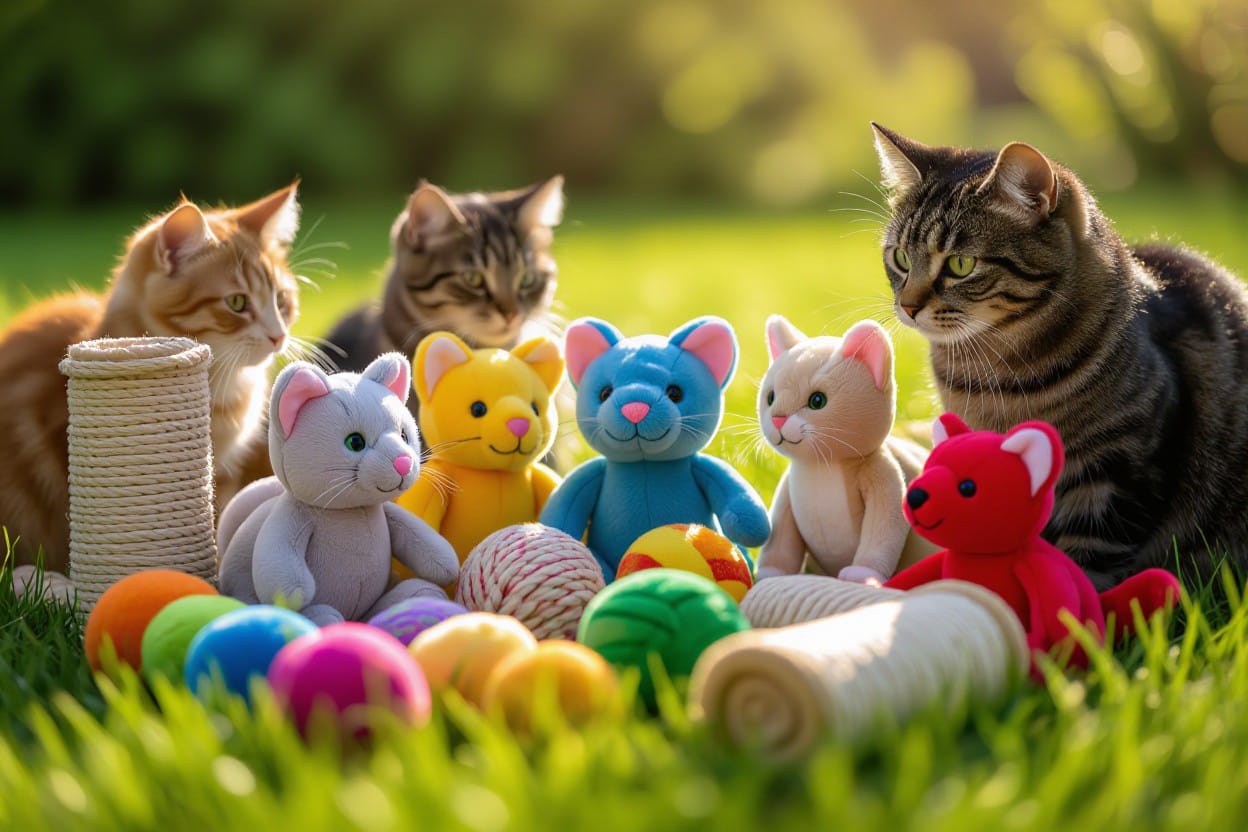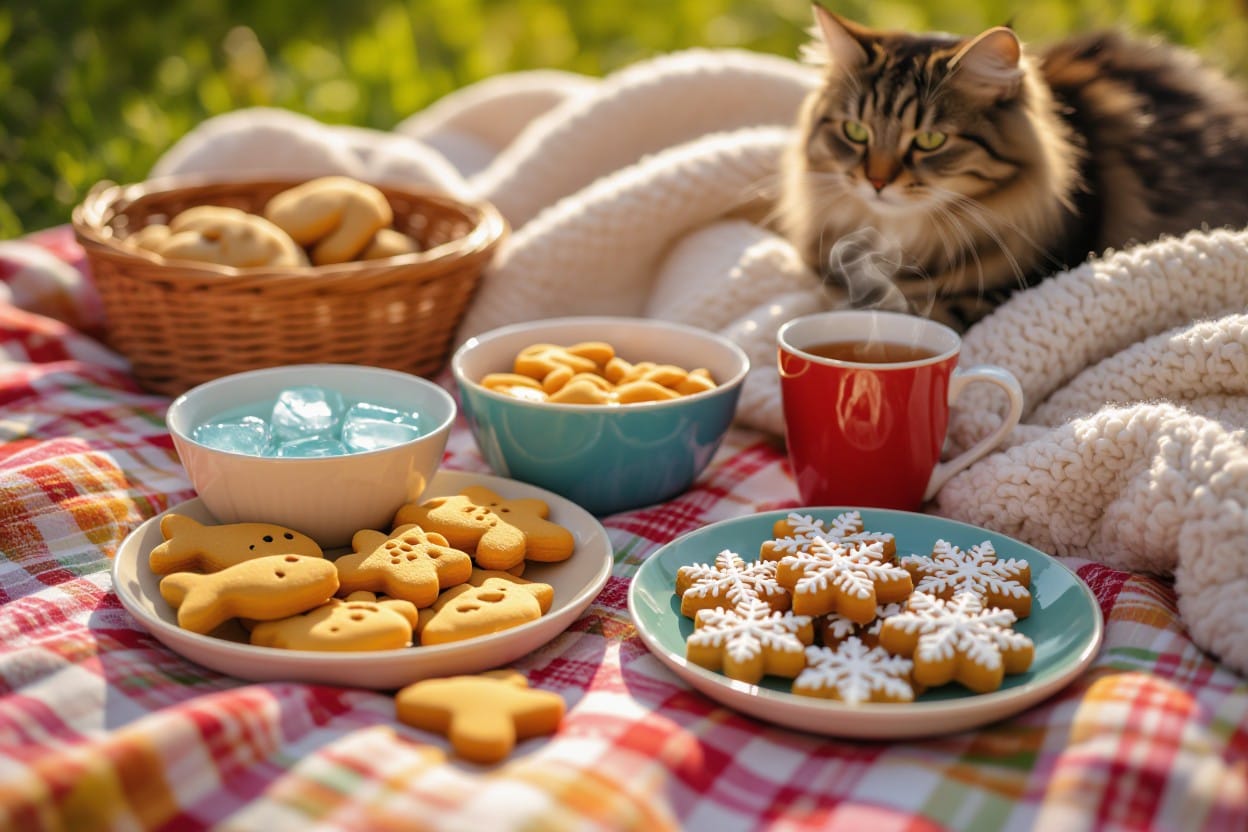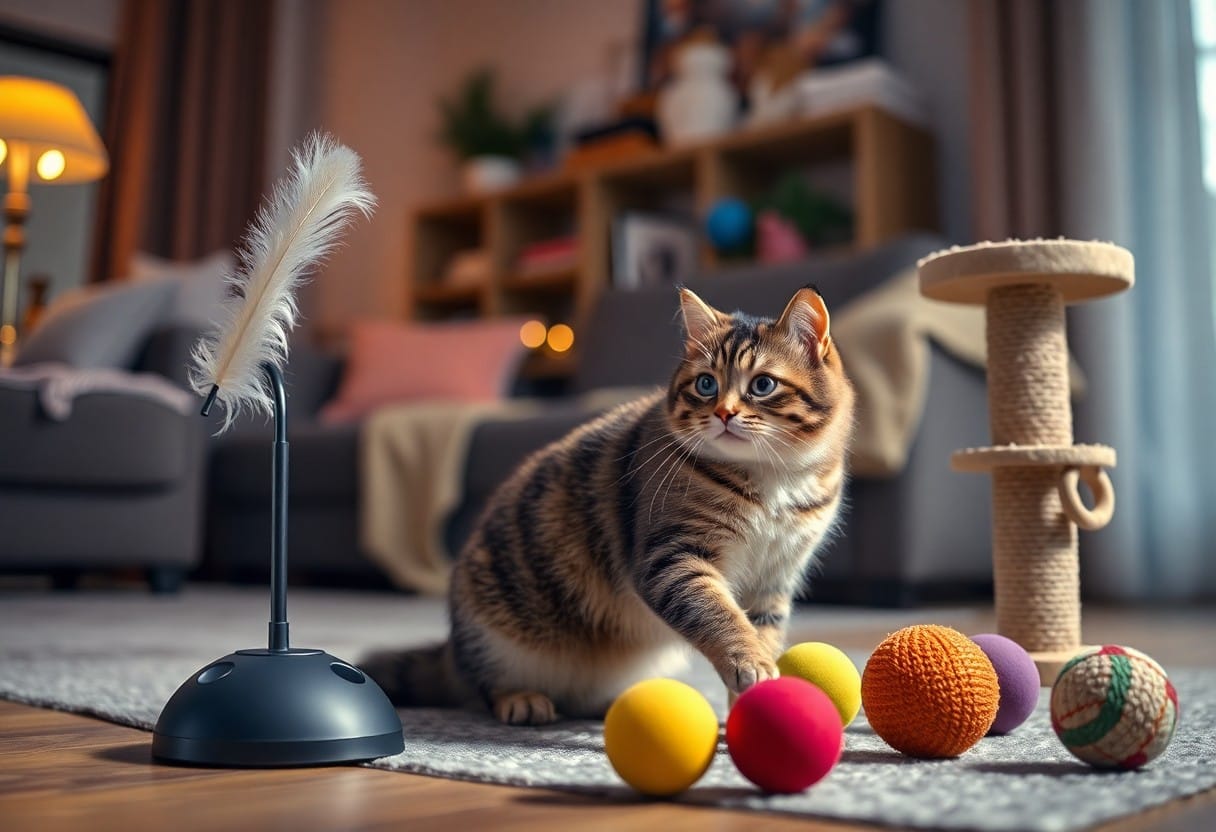There’s a delicate balance between flavor and nutrition when it comes to choosing the best treats for your cat. You want to reward your feline friend with tasty options they love, but it’s equally important to ensure these treats contribute to their overall health. By understanding your cat’s dietary needs and selecting high-quality ingredients, you can provide treats that satisfy their cravings without compromising their well-being. In this post, we’ll explore effective strategies to help you navigate this balancing act, ultimately leading to a happier and healthier cat.
Key Takeaways:
- Choose high-quality ingredients that provide both taste and nutritional benefits to ensure your cat enjoys the treat while getting necessary nutrients.
- Incorporate a variety of flavors and textures to make treats appealing, while also addressing dietary needs like protein, fiber, and healthy fats.
- Consider portion sizes and frequency of treats to maintain a balanced diet, using treats as an occasional reward rather than a staple in their diet.
The Nutritional Building Blocks of Cat Treats
To create cat treats that are both tasty and nutritious, understanding the nutritional building blocks is important. These building blocks consist of various ingredients that contribute to your cat’s overall health while satisfying their taste buds. Focusing on high-quality proteins, healthy fats, and carbohydrates can help you formulate treats that offer significant nutritional value. Balance these components to ensure your cat receives important nutrients without sacrificing flavor.
Key Ingredients That Pack a Nutritional Punch
High-quality ingredients are the foundation for healthy cat treats. Ingredients such as real meat, fish, and organ meats offer superior protein sources that support muscle development and repair. Additionally, certain vegetables and whole grains can provide important vitamins, minerals, and antioxidants to enhance your cat’s overall health. Functional ingredients like probiotics and omega fatty acids can also add extra benefits, promoting digestion and skin health.
The Role of Protein, Fats, and Carbohydrates
Protein, fats, and carbohydrates all serve vital roles in your cat’s diet. Protein is important for muscle maintenance and provides energy, while fats contribute to caloric intake and support skin and coat health. Carbohydrates, although not the primary energy source for cats, can offer fiber for digestive health and provide a source of energy when appropriately selected.
When formulating cat treats, considering the right balance of these macronutrients becomes important for your pet’s well-being. For example, a protein-rich treat can be made using chicken or fish, providing amino acids that help maintain lean muscle mass. Healthy fats, such as those from fish oil or chicken fat, not only enhance flavor but also contribute omega fatty acids important for skin and coat health. While cats are obligate carnivores and require a higher proportion of protein, incorporating a small amount of easily digestible carbohydrates, like pumpkin or sweet potato, can offer additional fiber and nutrients. Ensuring your treats include a balance tailored to your cat’s specific requirements can contribute to their overall health and happiness.
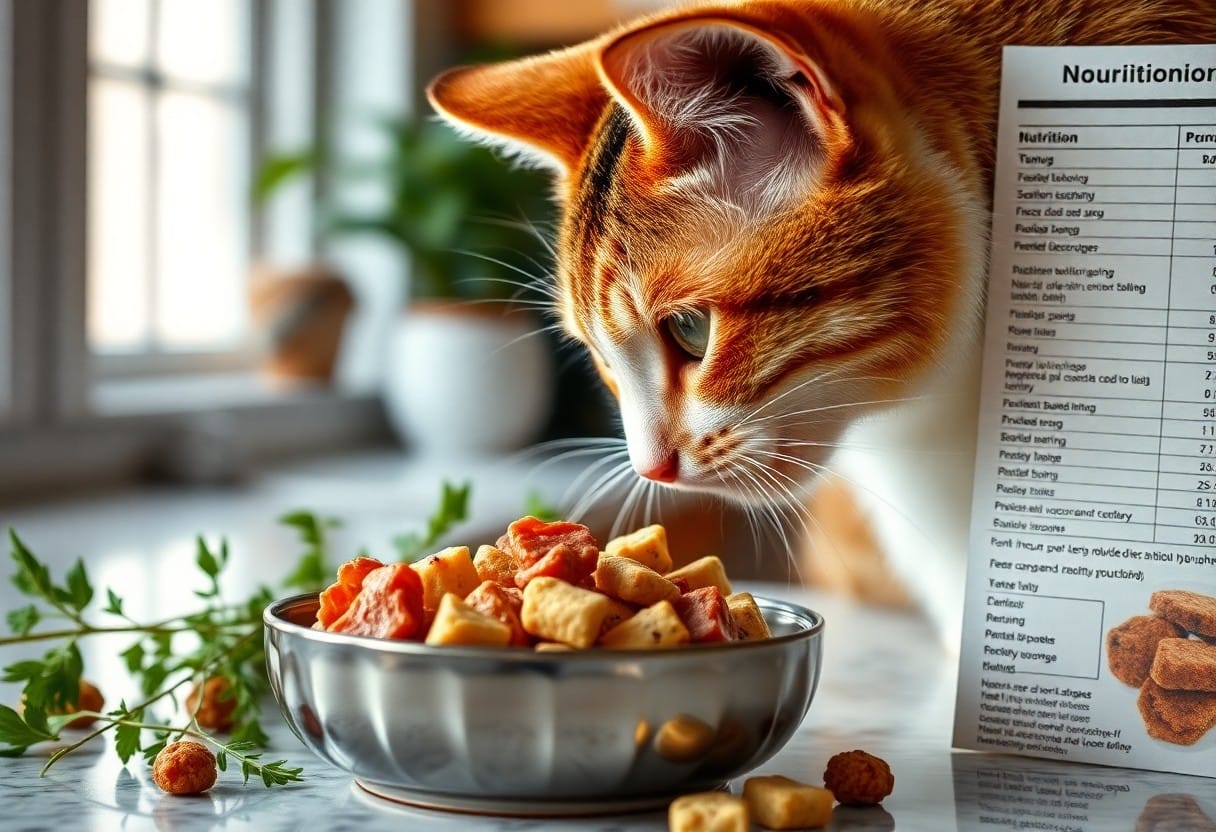
Flavor Enhancers: What Cats Crave
Understanding Feline Taste Preferences
Your feline friends are more particular about taste than you might think. Cats have taste buds that favor certain flavors, especially umami, which is found in meats and fish. Unlike humans, they lack sweet taste receptors making them indifferent to sugary flavors. Feline taste preferences lean toward high-protein options, which is often why they show preference for treats made from real meat or fish ingredients.
Natural vs. Artificial Flavorings: A Comparative Analysis
Both natural and artificial flavorings have their place in cat treats, but they deliver different experiences. Natural flavorings often come from animal sources, enhancing palatability without synthetic additives, while artificial flavorings can be engineered to replicate intense flavors. However, not all artificial additives are harmful, though your cat’s long-term health might benefit more from a natural approach.
Natural vs. Artificial Flavorings: A Comparative Analysis
| Natural Flavorings | Artificial Flavorings |
|---|---|
| Derived from real meat, fish, or plant sources | Man-made compounds designed to mimic flavors |
| Typically easier for cats to digest | Sometimes harder to process and may cause allergies |
| Often more appealing to a cat’s palate | Consistency in flavor can be maintained |
| Higher cost associated with sourcing | Lower production costs |
A deeper dive reveals that cats often respond better to natural flavorings because those ingredients align with their natural diets. For instance, fish oils and meats can stimulate appetites effectively compared to synthetic flavors, which some cats may find unappealing. Additionally, while natural options may come at a higher price point, the benefits for your cat’s health and satisfaction can far outweigh the cost, ensuring that your investment yields happier and healthier pets.
Striking the Right Balance: Formulating Cat Treats
Formulating cat treats requires a strategic approach that harmonizes both palatability and health benefits. A solid recipe should prioritize high-quality proteins, vital vitamins, and minerals while carefully limiting fillers and artificial ingredients. Explore options that are rich in flavor, like chicken or fish, which can entice even the pickiest eaters, while also incorporating whole grains or vegetables to add nutritional value without sacrificing taste. By testing different formulations, you can create cat treats that your feline companion will crave yet still provide them with vital nutrients.
The Science Behind Flavor and Nutrition Synergy
Flavor and nutrition can work hand in hand to enhance the overall appeal of cat treats. Utilizing specific ingredients that are both tasty and beneficial helps create a synergy; for instance, adding fish oil not only improves palatability but also serves as a source of Omega-3 fatty acids that foster healthy skin and coat. This combination can increase your cat’s pleasure while delivering vital nutrients, making each treat a celebration of flavor that supports their wellbeing.
Incorporating Superfoods into Treat Recipes
Superfoods, such as blueberries or pumpkin, can be rich in antioxidants and vital nutrients, providing significant health benefits without compromising taste. These ingredients can enhance the nutritional profile of your cat treats by introducing vitamins and antioxidants, like Vitamin C in blueberries, which can boost your cat’s immune system. Pumpkin is a great source of fiber and can also aid digestion, making it a versatile addition. By carefully selecting and balancing these superfoods, you can create a delightful treat that promotes your cat’s health while satisfying their taste buds.
Incorporating superfoods into your cat treat recipes can transform them into holistic offerings that cater to your pet’s sensory enjoyment and nutrient needs. For example, organic spinach can add iron and vitamins while complementing a fish or poultry base. Similarly, incorporating coconut oil can enhance the flavor while providing healthy fats for energy and digestion. By experimenting with various superfoods, you make sure each bite is not only delicious but also fortifying, ultimately supporting a longer, healthier life for your furry friend.
The Importance of Ingredient Transparency
Ingredient transparency empowers you to make informed decisions about your cat’s treats. With overwhelming options on the market, understanding what goes into your feline’s snacks is vital for ensuring both their pleasure and health. By being aware of the ingredient sources, you can select treats that align with your pet’s dietary needs, avoiding fillers or questionable additives that offer little value. Opt for brands that share detailed sourcing and formulation data, reinforcing your confidence in the choices you make for your beloved companion.
Reading Labels: What to Look For
When examining cat treat labels, focus on the first few ingredients, as they contain the bulk of the product. Premium proteins like chicken or fish should be prioritized over vague terms like “meat by-products.” Additionally, steer clear of artificial flavors, colors, and preservatives. Look for whole food ingredients, such as fruits and vegetables, that contribute imperative vitamins and minerals. This attention to detail can help you uncover treats that not only satisfy your cat’s cravings but also support their overall health.
The Impact of Quality on Flavor and Nutrition
The quality of ingredients directly influences both flavor and nutritional value in cat treats. High-quality protein sources contribute not only to a more appealing taste but also provide imperative amino acids necessary for your cat’s health. Treats made with fresh, natural ingredients will have a superior flavor profile, enticing your feline to indulge without compromising their well-being. Brands that prioritize sourcing clean, responsibly-produced ingredients will inherently offer treats that pave the way for your cat’s optimal nutrition while satisfying their taste buds.
For example, a study presented by the Journal of Feline Medicine and Surgery emphasized that cats favor treats made from real meat over those with rendered meat meals. This preference highlights the importance of ingredient quality, as fresh ingredients enhance both the palatability and nutritional density of your cat’s snacks. Combining quality protein with wholesome grains or vegetables not only promotes better taste but also fosters a balanced diet, ensuring that each treat is a step toward better health rather than an empty calorie indulgence.
Crafting Homemade Cat Treats
Creating homemade cat treats empowers you to fully control the ingredients, ensuring both flavor and nutrition are prioritized. You can easily whip up batches using simple ingredients that are delightful to your cat’s palate while packing in goodness. By experimenting with various combinations of proteins, veggies, and wholesome grains, you can discover what your feline truly enjoys.
Simple Recipes That Delight and Nourish
Try blending cooked chicken or turkey with mashed sweet potato, forming small bite-sized balls that can be baked until firm. Another option is mixing canned tuna with oat flour and egg to create crunchy delights. Each of these recipes not only tempts your cat’s taste buds but also offers important nutrients for overall health.
Tips for Infusing Flavor Without Compromising Health
Enhancing flavor while maintaining health can be achieved through clever ingredient choices. You can incorporate fresh herbs, like catnip or parsley, for added taste, and use natural binding agents like pumpkin or yogurt. Opt for lean proteins and avoid fillers; this ensures that your treats are both scrumptious and nourishing. Monitor portion sizes to prevent overindulgence, and consider your cat’s dietary needs.
- Incorporate fresh herbs like catnip for flavor.
- Use natural bindings like pumpkin or yogurt.
- Opt for lean proteins to enrich nutrition.
- Monitor portion sizes to avoid overeating.
Infusing flavor into treats without sacrificing health is a fine art. You can experiment with alternative protein sources, such as quinoa or chickpeas, to create interesting textures. Incorporating low-sodium broths can also enhance the savory profile without harmful additives. Prioritize whole food ingredients and watch your cat’s reaction – their enthusiastic response will tell you it’s a winner. This attention to detail forms the basis of truly satisfying and beneficial treats.
- Experiment with alternative protein sources like quinoa.
- Consider low-sodium broths for flavor enhancement.
- Prioritize whole food ingredients for health benefits.
- Observe your cat’s reaction to discover favorites.
Conclusion
As a reminder, balancing flavor and nutrition in cat treats is important for keeping your feline friend both happy and healthy. You can achieve this by selecting high-quality, protein-rich ingredients that appeal to your cat’s taste buds while also being mindful of caloric content. Incorporate a mix of commercially available treats and homemade options, ensuring they are enriched with important vitamins and minerals. Pay attention to portion sizes and always check for any allergens that may be present, allowing you to treat your cat without compromising its overall well-being.
Q: What ingredients should I look for in cat treats to ensure a good balance of flavor and nutrition?
A: When choosing cat treats, look for high-quality protein sources such as chicken, turkey, or fish as the primary ingredients. These provide crucial amino acids that kitties need. Additionally, healthy fats like fish oil can contribute to flavor while supporting coat health. Including fruits and vegetables, like pumpkin or carrots, can add nutrients and fiber. Avoid treats with excessive fillers, artificial flavors, or preservatives, as they may compromise both taste and nutritional value.
Q: How do I ensure that my cat enjoys the treats while still gaining nutritional benefits?
A: To ensure your cat enjoys the treats, try offering a variety of flavors and textures to keep things interesting. You can also incorporate treats into playtime or training sessions to make them more appealing. Additionally, check the calorie content and nutritional profile to ensure that the treats provide healthy benefits without overfeeding. Balance is key; treats should complement your cat’s regular diet rather than replace it, promoting both taste and nutrition.
Q: Are there homemade options for cat treats that offer a good balance of flavor and nutrition?
A: Yes, homemade cat treats can be a fantastic way to ensure both flavor and nutrition. Simple recipes using ingredients like cooked chicken, mashed sweet potatoes, or fish can be nutritious and tasty. Be sure to follow guidelines for safe ingredients and portion sizes. Homemade treats allow you to control the ingredients, so you can offer flavorful options while avoiding additives and preservatives, ensuring they are both enjoyable and beneficial for your cat’s health.
